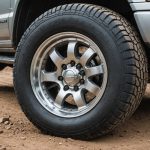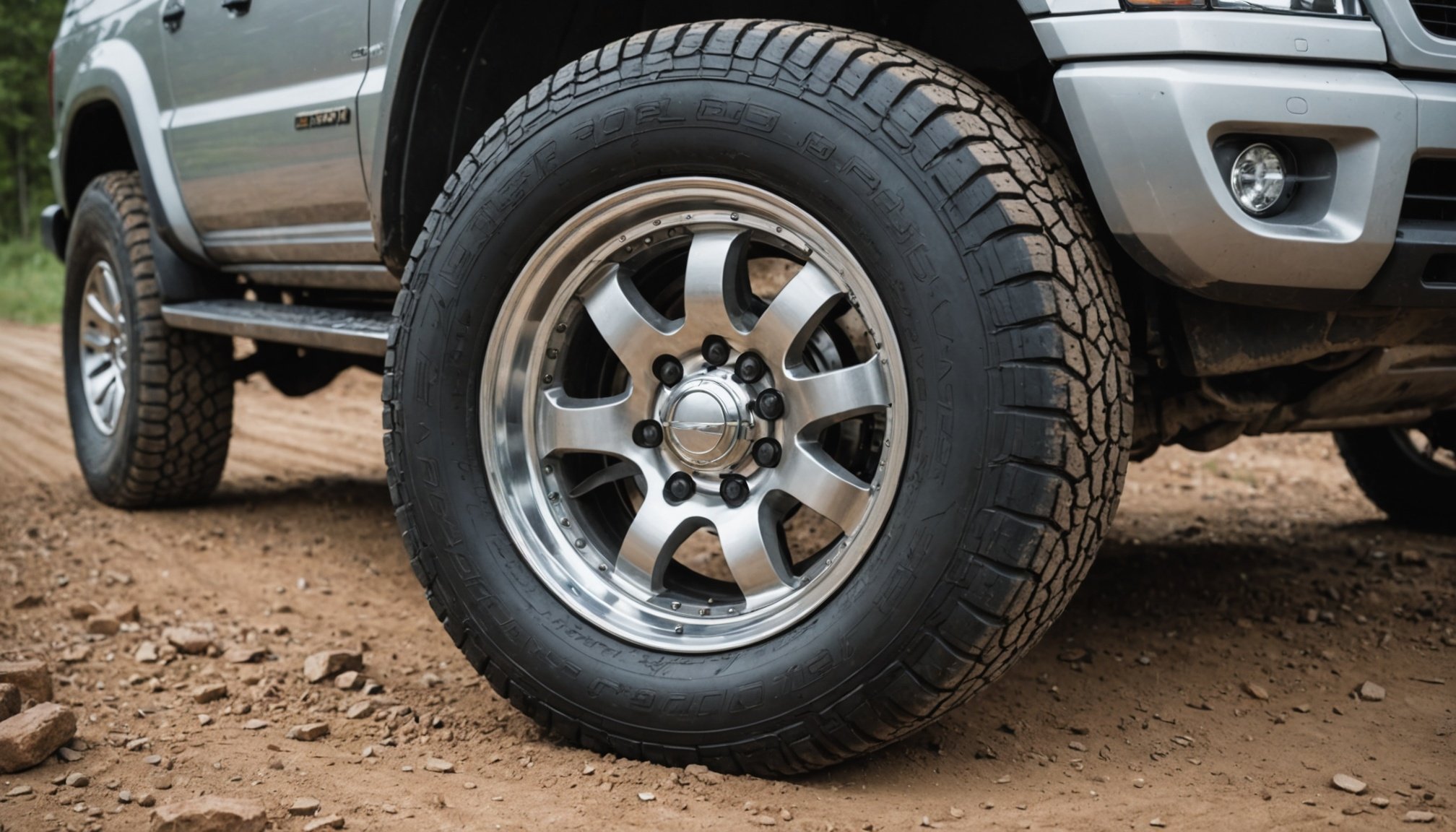Importance of Tire Rotation for Four-Wheel Drives
For four-wheel drive vehicles, proper tire maintenance is a crucial aspect that ensures optimal performance and safety. One of the primary factors to consider is the significance of tire rotation. Rotating tires regularly helps in maintaining even wear patterns, which is essential for prolonging the life of your tires.
Uneven tire wear can dramatically affect your vehicle’s handling and safety. When tires wear out inconsistently, it can lead to poor traction, especially during adverse weather conditions, reducing your car’s grip on the road. This situation can compromise your vehicle’s ability to brake effectively and handle corners, increasing the risk of accidents.
Also read : Comprehensive Guide to Testing and Replacing Timing Chains in High-Performance UK Cars
Regular tire maintenance schedules are beneficial for maintaining the balance and alignment of tires. For a four-wheel drive, where all wheels receive power simultaneously, it is vital to provide uniform wear across all tires. Most car manufacturers recommend rotating tires every 5,000 to 8,000 miles, ensuring that each tire wears evenly.
By adhering to a routine maintenance schedule, you not only enhance driving safety but also ensure prolonged tire longevity. Rotating tires also optimizes fuel efficiency, as misaligned or unevenly worn tires can cause the engine to work harder, consuming more fuel. Overall, being proactive with tire rotation is an investment in both safety and economy.
This might interest you : Comprehensive Guide to Testing and Replacing Timing Chains in High-Performance UK Cars
Step-by-Step Guide to Tire Rotation
Proper tire rotation is crucial for maintaining optimal vehicle performance and safety. While the tire rotation process might seem daunting, clear instructions can make it straightforward, especially for vehicles like four-wheel drive. Here’s a step-by-step guide to help.
Preparing for Tire Rotation
Before diving into the tire rotation process, it’s important to prepare adequately. Position your vehicle on a level surface to avoid any mishaps. Engaging the parking brake secures the vehicle further, ensuring it remains stationary during the task. For four-wheel drive vehicles, consult your manual as specific rotation patterns might be necessary.
Tools and Equipment Needed
You’ll require a few essential tools to effectively carry out the process:
- Jack: A hydraulic or scissor jack will help elevate the vehicle.
- Lug Wrench: For removing the wheel nuts.
- Torque wrench is also recommended for tightening the nuts to the correct specification afterwards.
Safety Precautions
Safety should be a top priority. Always wear appropriate safety gear such as gloves and goggles to protect yourself. Double-check that your vehicle is stable before starting. With these tools and precautions in place, you’ll ensure a safe and efficient tire rotation, extending the lifespan of your tires and enhancing driving safety.
Tire Rotation Patterns
Understanding the rotation patterns suitable for your vehicle can significantly impact tire longevity and performance. Especially with directional and non-directional tires, it’s crucial to know the right approach to rotation.
Popular Rotation Patterns for Four-Wheel Drives
For four-wheel drive vehicles, choosing the correct rotation pattern is essential. The most commonly used methods include the cross pattern, rearward cross, and side-to-side rotation. Each has its advantages, especially in maximizing tire usage and wear distribution. The rearward cross, for example, involves moving front tires to opposite rear positions, while the cross pattern swaps front tires with rear tires diagonally.
Choosing the Right Pattern for Your Tires
When selecting a rotation pattern, the type of tires—directional or non-directional—plays a vital role. Directional tires, marked with a tread pattern designed to roll in one direction, often require a front-to-back rotation pattern. For non-directional tires, patterns like the rearward cross or side-to-side are generally recommended.
Adaptations for Different Tire Types
It’s essential to adhere to manufacturer guidelines when rotating directional tires. These guidelines ensure the tread design functions as intended, especially in wet or snowy conditions. Non-directional tires, lacking specific tread directionality, provide flexibility in rotation patterns, allowing you to choose those best fitting your driving style and environment. Always consult your vehicle’s manual for precise recommendations.
Consequences of Neglecting Tire Rotation
Neglecting tire rotation can lead to an array of consequences that affect your vehicle’s performance and safety. One of the most frequent issues is uneven tire wear, which often results from keeping tires in the same position for extended periods. This can severely limit tire life, leading to early replacement costs.
Moreover, unevenly worn tires directly impact your vehicle’s fuel efficiency. As tires wear unevenly, they generate more resistance while driving. This increased resistance forces your engine to work harder, thereby consuming more fuel and reducing your vehicle’s overall efficiency. For those who value driving comfort, the implications are noticeable as well. Uneven tires can cause vibrations and lead to an uncomfortable ride.
Most importantly, there are significant safety risks associated with neglected tire rotation. Uneven or worn tires can compromise your vehicle’s grip on the road, especially in wet conditions, increasing the likelihood of hydroplaning. Moreover, these issues can affect braking distances and make the vehicle difficult to control during sudden maneuvers, posing a threat to both the driver and others on the road.
Regular tire rotation is a straightforward maintenance task that can prevent many of these problems, ensuring a safer and more economical driving experience.
Expert Insights on Tire Maintenance
Keeping your tyres in peak condition is essential for safety and performance. Applying professional recommendations can guide you toward effective tire care.
Professional Recommendations
Experts advise regular rotation of tyres every 8,000 to 10,000 km to ensure even wear. They suggest checking the alignment during rotations to prevent uneven tread wear. Regular inspections for cracks or balding spots can also prolong longevity, enhancing safety.
Seasonal Considerations for Tire Care
Advice from experts emphasises the need to adapt your tire maintenance routine based on the season. In summer, increased temperatures can expand the tyre’s air, necessitating regular pressure checks. During winter, swapping to winter tyres ensures better traction in icy conditions. Changing tyre types with seasons can enhance performance and fuel efficiency, delivering optimal grip and control across varying weather conditions.
Understanding Tire Pressure
Proper tyre pressure is crucial for safe driving and optimising vehicle performance. Experts recommend checking the pressure monthly or before long trips. Incorrect pressure can lead to uneven wear, reduced fuel efficiency, or even blowouts. Using a reliable gauge ensures accurate readings. Learn to follow the vehicle’s manual for the recommended pressure settings. Monitoring regularly can prevent potential hazards and improve both efficiency and safety.
FAQs and Troubleshooting Common Issues
When it comes to tire rotations, several frequently asked questions arise. A common query is about the ideal rotation schedule. Experts generally recommend rotating your tires every 5,000 to 7,500 miles, aligning often with when you get your oil changed. This helps ensure even wear and extends the tires’ lifespan.
In terms of troubleshooting, a few common problems occur during tire rotations. One such issue is experiencing vibrations or noise after rotation. This might indicate uneven tire wear or improper balancing. In such cases, rebalancing the tires usually resolves the issue. Another problem might be pulling to one side, which could hint at alignment issues needing professional attention.
While these tips can guide simple troubleshooting, consulting a professional for more complex tire problems is crucial. Professionals can diagnose underlying issues such as mechanical wear patterns or suspension problems that might not be obvious to an untrained eye.
It’s vital to pay attention to your vehicle’s performance and consult these FAQs regularly. By being proactive, you can ensure a safe and smooth driving experience, significantly enhancing your vehicle’s reliability and safety. Remember, prompt attention to any irregularities can prevent more significant issues down the road.










